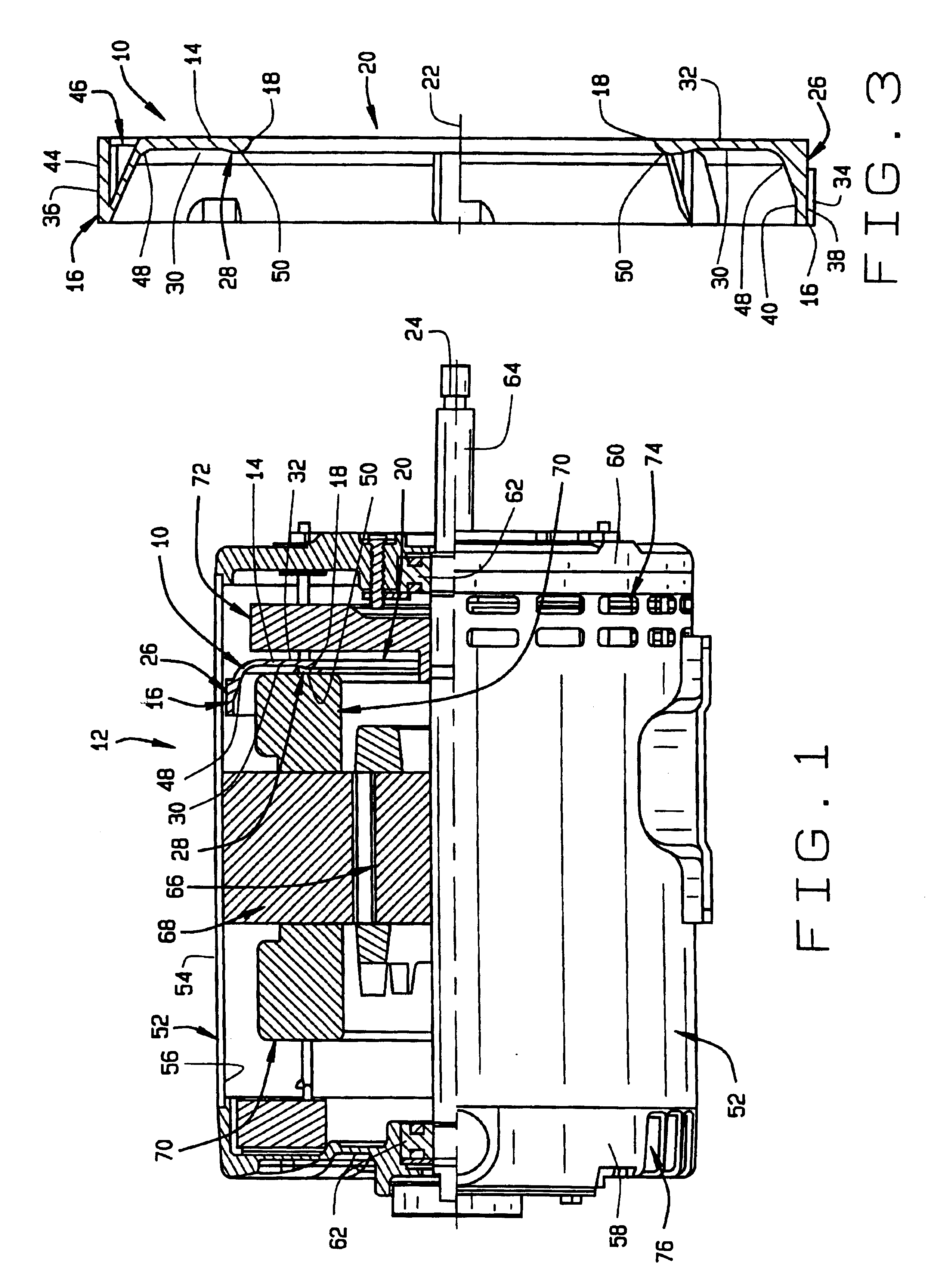Dynamoelectric device air flow baffle shaped to increase heat transfer
a technology of air flow and dynamoelectric devices, which is applied in the direction of windings, magnetic circuit rotating parts, magnetic circuit shapes/forms/construction, etc., can solve the problems of disadvantaged prior art baffle designs, lower air flow rate and velocity, etc., to reduce separation, reduce/eliminate separation, and improve the inlet flow into the fan
- Summary
- Abstract
- Description
- Claims
- Application Information
AI Technical Summary
Benefits of technology
Problems solved by technology
Method used
Image
Examples
Embodiment Construction
[0023]FIG. 1 shows a sectioned view of the air flow baffle 10 of the present invention employed in an electric motor 12 dynamoelectric device. FIGS. 2 to 4 show the baffle 10 removed from the device. Although the baffle 10 is to be described in use in an electric motor dynamoelectric device, it should be understood that the baffle is equally well suited for use in other dynamoelectric devices. It is not intended that the description of the baffle with an electric motor limit the scope of protection for the baffle to only use in an electric motor dynamoelectric device.
[0024]The air baffle 10 of the invention can be stamped from metal, molded of plastic, or manufactured by other equivalent methods and of other equivalent materials. The baffle 10 is basically a circular disk or plate 14 having a circular outer perimeter edge 16 and a circular inner edge 18 surrounding a center hole 20 of the baffle. The center hole 20 has a center axis 22 that is co-axial with a center axis 24 of the e...
PUM
 Login to View More
Login to View More Abstract
Description
Claims
Application Information
 Login to View More
Login to View More - R&D
- Intellectual Property
- Life Sciences
- Materials
- Tech Scout
- Unparalleled Data Quality
- Higher Quality Content
- 60% Fewer Hallucinations
Browse by: Latest US Patents, China's latest patents, Technical Efficacy Thesaurus, Application Domain, Technology Topic, Popular Technical Reports.
© 2025 PatSnap. All rights reserved.Legal|Privacy policy|Modern Slavery Act Transparency Statement|Sitemap|About US| Contact US: help@patsnap.com



